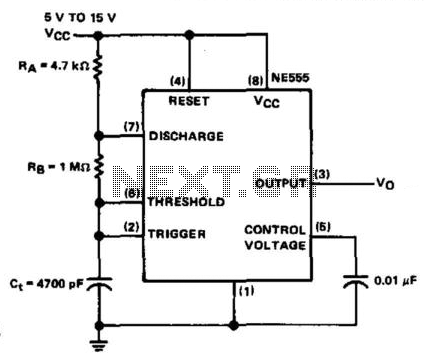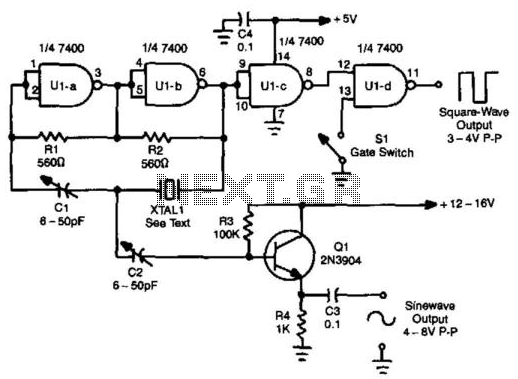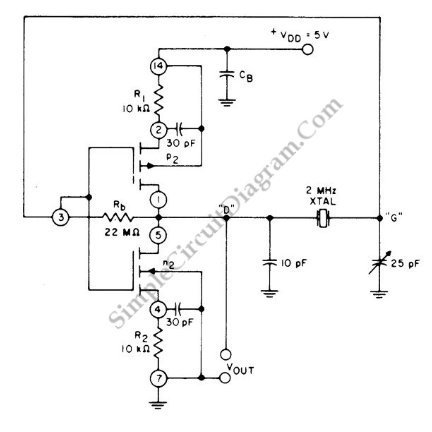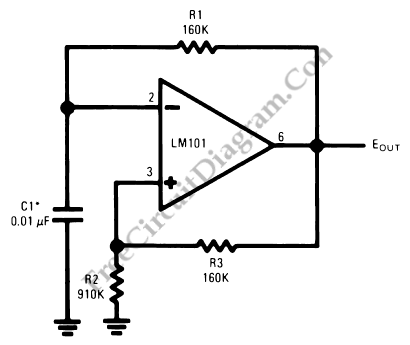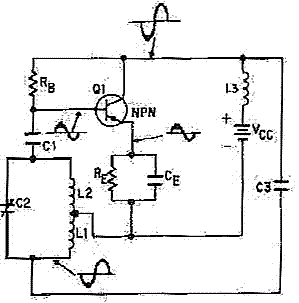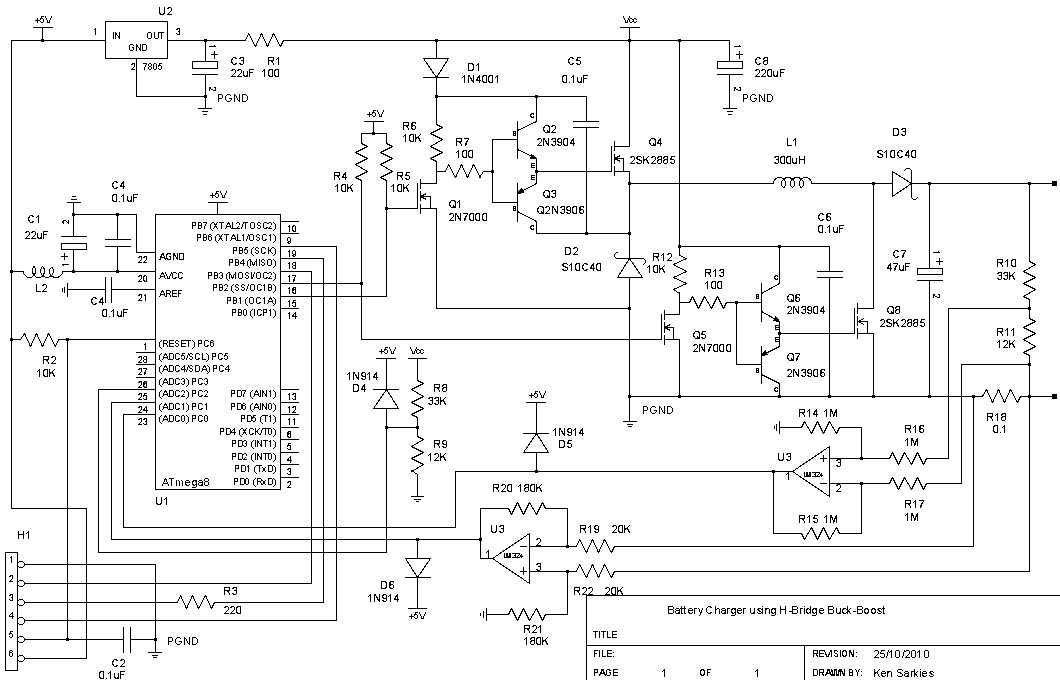
1Mhz fet crystal oscillator
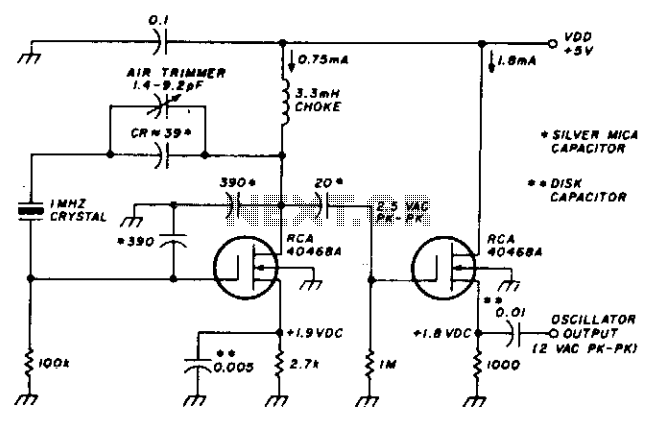
This stable oscillator circuit exhibits less than a 1 Hz frequency change over a VDD range of 3 to 9 volts. Stability is attributed to the use of MOSFET devices and stable capacitors.
The described oscillator circuit is designed to maintain a consistent frequency output with minimal variation, specifically less than 1 Hz, across a supply voltage (VDD) range of 3 to 9 volts. The choice of MOSFET devices is crucial for achieving this stability, as they offer high input impedance and low output capacitance, which contribute to the circuit's overall performance. MOSFETs are known for their fast switching capabilities and low power consumption, making them ideal for oscillator applications where efficiency and precision are paramount.
In addition to the MOSFETs, the circuit employs stable capacitors, which play a significant role in determining the oscillator's frequency and stability. Capacitors with low temperature coefficients and minimal leakage current are preferred, as they ensure that the frequency remains unaffected by environmental changes or aging effects. The combination of these components results in a robust oscillator design that can reliably operate across a wide voltage range.
The oscillator's design may also include feedback mechanisms to enhance stability further. Negative feedback can be utilized to correct any frequency drift that may occur due to variations in supply voltage or component tolerances. This feedback loop can be implemented using additional resistive or capacitive elements, ensuring that the output frequency remains tightly regulated.
Overall, the oscillator circuit's resilience to voltage fluctuations and its ability to maintain a consistent output frequency make it suitable for various applications, including signal generation, clock pulses for digital circuits, and timing applications in microcontroller systems.This stable oscillator circuit exhibits less than 1 Hz frequency change over a VDD range of 3-9 volts. Stability is attributed to the use of MOSFET devices and the use of stable capacitors. 🔗 External reference
The described oscillator circuit is designed to maintain a consistent frequency output with minimal variation, specifically less than 1 Hz, across a supply voltage (VDD) range of 3 to 9 volts. The choice of MOSFET devices is crucial for achieving this stability, as they offer high input impedance and low output capacitance, which contribute to the circuit's overall performance. MOSFETs are known for their fast switching capabilities and low power consumption, making them ideal for oscillator applications where efficiency and precision are paramount.
In addition to the MOSFETs, the circuit employs stable capacitors, which play a significant role in determining the oscillator's frequency and stability. Capacitors with low temperature coefficients and minimal leakage current are preferred, as they ensure that the frequency remains unaffected by environmental changes or aging effects. The combination of these components results in a robust oscillator design that can reliably operate across a wide voltage range.
The oscillator's design may also include feedback mechanisms to enhance stability further. Negative feedback can be utilized to correct any frequency drift that may occur due to variations in supply voltage or component tolerances. This feedback loop can be implemented using additional resistive or capacitive elements, ensuring that the output frequency remains tightly regulated.
Overall, the oscillator circuit's resilience to voltage fluctuations and its ability to maintain a consistent output frequency make it suitable for various applications, including signal generation, clock pulses for digital circuits, and timing applications in microcontroller systems.This stable oscillator circuit exhibits less than 1 Hz frequency change over a VDD range of 3-9 volts. Stability is attributed to the use of MOSFET devices and the use of stable capacitors. 🔗 External reference
